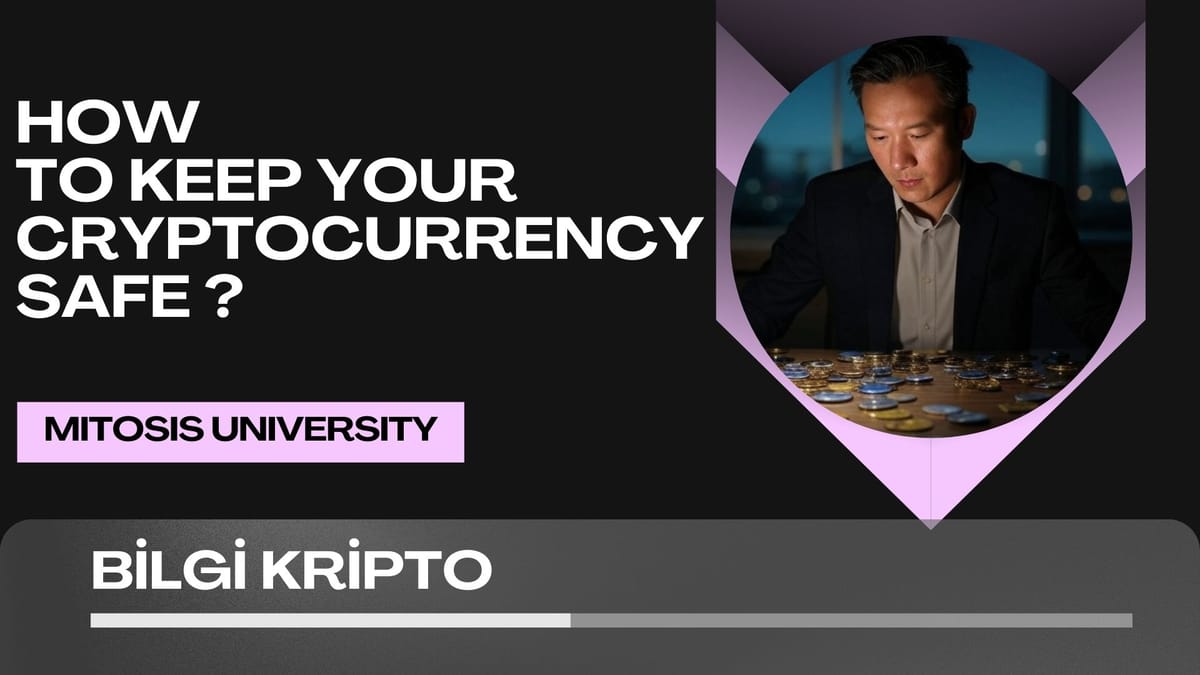How to Keep Your Cryptocurrency Safe?

As cryptocurrencies enter the mainstream, security concerns have become more urgent. Cybercriminals steal incredible amounts of digital assets every year. In this dynamic environment, staying vigilant is crucial to protect your cryptocurrency investments. This article outlines the top five security practices to help you safeguard your digital assets from various threats.
To protect your digital assets, you must always be cautious of what scammers can do and be proactive in your protective measures. Here are some steps you can take to secure your crypto assets:
1. Secure Your Seed Phrase
Your seed phrase (also known as your recovery phrase) is the gateway to your wallet and cryptocurrency assets. It's a 12 to 24-word phrase that serves as the master key to access your wallet if you lose access or need to switch devices. Here are some tips on how to secure your seed phrase:
- Store your seed phrase offline: As soon as you receive your seed phrase, avoid saving it to local folders or cloud storage. Storing it online can expose it to potential attacks. The safest approach is to store it offline.
- One way to do this is by investing in a hardware wallet that can generate and store your seed phrase offline. Another option is to physically store your seed phrase in a safe or vault. While paper backups are common, it's safer to use a metal plate engraved with your seed phrase for extra protection.
- Split your seed phrase: If you want to increase the security of your seed phrase further, you can split it into multiple parts and store each part in different secure locations. Ideally, no one other than you should have access to all parts of your seed phrase.
2. Beware of Social Media Account Impersonation
Social media platforms have become breeding grounds for crypto scams, as fraudsters create fake accounts that closely resemble those of well-known exchanges or celebrities. Here's a reminder from the real Vitalik Buterin warning users about thousands of fake profiles impersonating him.
These malicious parties attempt to deceive users by impersonating or mimicking well-known accounts. Here are steps to protect yourself from social media account impersonations:
- Check for verification signs: Look for blue checkmarks or verification symbols on profiles. However, keep in mind that these can be fake or purchased.
- Check the handle: Handles are often a giveaway for fake profiles. Savvy scammers try to keep names as close as possible to the originals. For example, "VitalikButerin" might be replaced with "Vita1ikButerin."
- Scroll through the profile: Scroll through the profile and check some past posts. This will give you an idea of whether the profile is legitimate.

3. Avoid Public Wi-Fi
Public Wi-Fi networks are notorious for their security weaknesses and vulnerability to cyberattacks. Accessing your cryptocurrency wallet or making transactions while connected to public Wi-Fi can put your assets at risk.
Public Wi-Fi networks are susceptible to various cybersecurity threats, including:
- Evil twin attacks: Hackers set up malicious access points with trusted names (e.g., "Hotel Wi-Fi") to steal your data once you connect.
- Man-in-the-middle (MitM) attacks: Malicious parties can intercept data between a Wi-Fi router and a user's device, gaining access to sensitive information like login credentials.
- Password cracking attacks: Scammers use software to try many combinations of usernames and passwords to access a router's admin interface.
Avoid using public Wi-Fi when accessing your crypto accounts or making transactions. For more information, check out why public Wi-Fi is insecure.
4. Be Careful of Fake Live Stream Videos
Scammers have turned to platforms like YouTube and Twitch to spread crypto scams. They often use stolen video content to create fake live streams promoting fraudulent giveaways. In some cases, they hack YouTube accounts with millions of followers and try to convince users to send cryptocurrency to participate in fake giveaways.
For example, you might encounter a video with Elon Musk, Cathie Wood, and Jack Dorsey discussing crypto and blockchain technology. However, scammers may use legitimate videos to promote fake giveaways or hacked channels.
Before interacting with any live video, especially those involving cryptocurrency giveaways, ensure you verify the legitimacy of the channel, number of videos, presence of verification badges, and the channel's creation date. Be cautious and ensure you're cross-checking multiple data points since hacked accounts can appear legitimate and even have millions of subscribers.
Also, check the social media accounts of the individuals featured in the video. If the promotion is legitimate, you should be able to find information from multiple trusted sources.

5. Be Aware of AI Deepfake Scams
Deepfake technology uses artificial intelligence (AI) to create fake videos that look like the real thing. By combining existing images and videos, deepfakes make people appear to say or do things they never did. Predictably, scammers have started using deepfake technology to create highly sophisticated scams.
Hackers use deepfakes to impersonate others or act as if they are experts. They often deceive victims with fake competitions or investment opportunities, pressuring them with deadlines.
So, how can you protect yourself from deepfake scams?
- Watch for eye and lip movement patterns: Deepfake content typically combines many images, so pay attention to blinking patterns and lip synchronization.
- Listen for inconsistent voices: Robotic voices or unusual tone fluctuations can be signs of a deepfake. Be sure to carefully listen for inconsistencies in the audio quality.
- Ask questions: When interacting with a suspicious deepfake, ask questions that only the real person would know. Ensure you have background information to cross-reference for verification.
Final Thoughts
It's your responsibility to protect your cryptocurrency assets. In this article, we've outlined five key practices to keep your coins safe:
- Secure your seed phrase.
- Be cautious of social media account impersonation.
- Avoid public Wi-Fi.
- Watch out for fake live stream videos.
- Be wary of deepfake scams


Comments ()